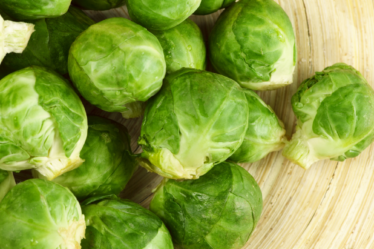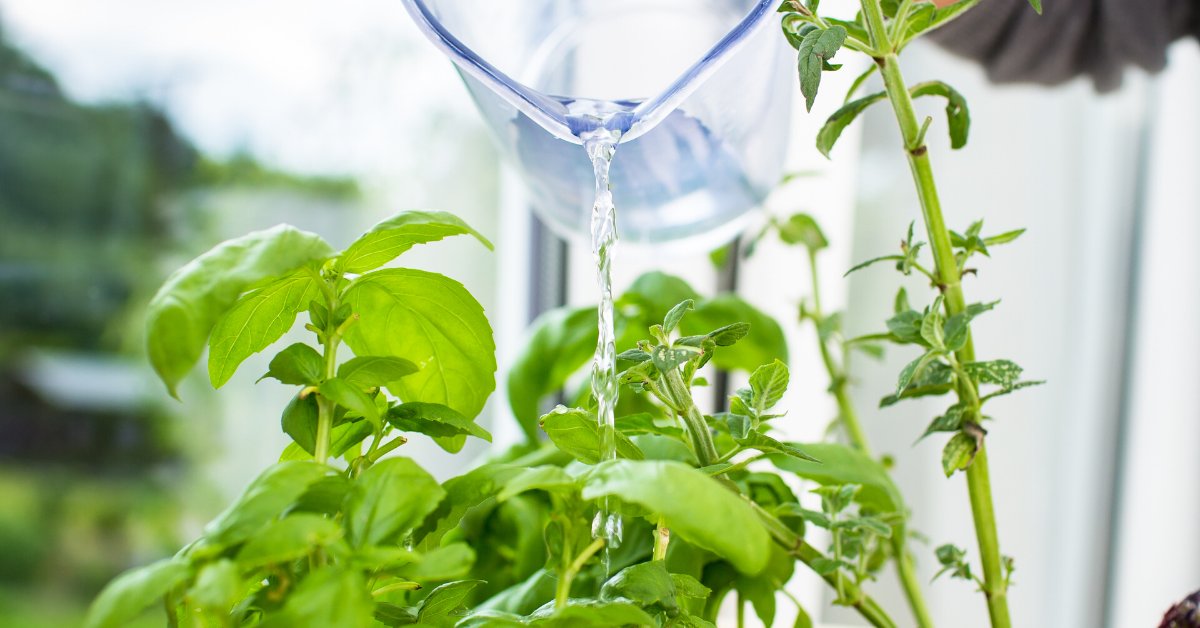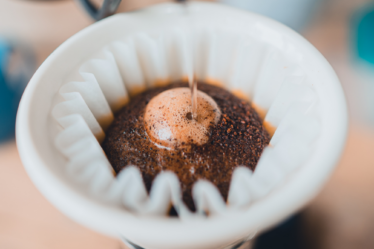
Not everyone lives in a house or is lucky enough to have an extra plot of land in their house for gardening. Most of the city dwellers can be considered blessed if we just have some extra space in our house for a few potted plants.
However, that doesn’t mean that you won’t be able to grow some fresh vegetables at home for your family. Although limited in variety, you can use the extra space in your balconies, terrace, rooftop and even your kitchen as a mini kitchen garden.
If you know exactly how to and are willing to work on it, you can definitely grow the right vegetables inside the comfort of your home, without taking up a lot of space or making a mess.
What Vegetables Can You Grow in Pots?
It’s true that when you have to limit your gardening to pots and containers, it will also limit the types of vegetables you can grow at home.
Still, the list isn’t very short. From salad greens and chives to towering plants bearing carrots, cucumbers and eggplants – it is possible to grow almost everything in containers depending on the amount of space you can space.
Almost all kinds of herbs can be grown in small containers and pots in your very own kitchen, but for larger vegetable plants, you’ll need a larger space with plenty of sunshine and air circulation.
Balconies, terraces, windowsills and rooftops are the best places to grow vegetables in the house. With the right setup, the proper amount of sunlight and air and space to grow, you can even grow potatoes, cherry tomatoes and bush tomatoes, bell peppers, summer squash, chards, pole beans, and more.
How Deep Should Pots be for Growing Vegetables?
The depth of your containers and pots will, in fact, determine what kind of vegetables you can grow in your home garden.
As a general rule, the bigger and deeper the pot, the better it is both for the plants and the beginner gardener. Since larger pots will hold more soil and more water, they won’t need regular watering or constant looking after. Any kind of container, pot, box, the window still, empty paint buckets – if large enough, can be used for growing vegetables.
Containers that are at least 10 inches wide and 12 inches deep can be used for growing most kinds of vegetables and herbs.
Some vegetables – such as carrots, leaf lettuce, parsley, radish, spinach and green onion – can grow perfectly well in 1-gallon containers. These plants don’t need a lot of depth to grow, mature and produce, and can be quite satisfied in smaller single-gallon containers. However, it also means that you might not be able to plant more than 2-3 plants of each variety in a single container.
For relatively larger plants like beets, okra, potatoes, sweet corn, dill and summer squash, pots need to be at least 10” to 12” in depth. This is because the roots of these vegetable plants grow deep and spread out under the ground more.
With smaller herbs and ground vegetables, a container that is only 4” to 5” deep is enough. For example, chives, basil, coriander, salad greens and lettuce can grow perfectly in shallow containers.
If you are installing your own gardening boxes for vegetables, they should be up to 18” deep to grow medium-rooted vegetables like cantaloupes, certain beans and cucumbers. Apart from these, most vegetables can grow perfectly well in pots and containers that are 12” in depth or slightly less.
How Do You Care for Potted Plants?
Taking care of your potted vegetables plants are both harder and easier than with a regular garden. It’s harder because you’ll need to water potted plants twice as much as you’d water plants in your garden, but easier because you won’t have to go out of the house to do so.
After your vegetable plants start growing in a container or pot, they will start to dry out twice as fast. This is because the shallow soil reserve in pots can’t reach out to water and moisture in the ground and needs to be watered more.
With pots, you will need to water your plants more than once every day – more if you live in a hot region and if your plants get direct sunlight. If the plants go dry even once, it can severely hamper the harvest and cause the vegetables to rot overnight.
When your vegetable plants are in pots, it also means that you’ll need to water them more thoroughly, too. Inside containers, water can sometimes rush down without wetting the soil thoroughly, which is what needs to happen inside the container. Water should be poured down gradually so that the soil is thoroughly wetted and not a single inch is left dry.
It is very important to do the finger test to determine just how much water your plants need. This is a simple test where you simply stick a dry finger into the soil. If the first 2” to 3” inches of your finger come out dry, it means that the pot needs watering because the soil is dry.
Another way to determine this is to lift one of the sides of the container, if possible. There will be a significant difference in the weight of the container when the soil is drier than when it is wet. If the container feels lighter than it does after watering, it means that the soil has dried up and needs watering.
How Do You Fertilize Potted Vegetable Plants?
The best way to fertilize your potted plants is to start early, i.e. at planting time. A slow-release fertilizer can work wonders in the growth of your vegetable plant, but it needs to be added properly and in the right amount. The slow-release fertilizer that is rich in phosphorus, nitrogen and potassium and contains equal amounts of all three nutrition is the perfect one for all kinds of vegetables.
Slow-release fertilizers need to be the wet soil before the vegetables are planted instead of later for the best results. However, when the plants start producing, any kind of water-soluble fertilizer can also be sprayed on the leaves and on the half-grown vegetables. This will keep insects away and help the vegetables to grow to their full potential.
Potted plants also need to be fertilized regularly, at least once every two weeks. With constant and thorough watering, fertilizer washes away from the soil and accumulates at the bottom of the container. This is why organic fertilizer should be regularly added to the top of the soil to keep your plants healthy.
How Can You Keep Pests and Insects Away from Potted Plants?
One good thing about planting vegetables in pots and containers is that they’ll be attracting fewer insects and pests than regular garden plants. Because they are mostly isolated from other plants, insects won’t automatically jump around from plant to plant.
However, all vegetable plants attract some pests but that can be remedied with the proper strategies. You can always plant some herbs beside your vegetable plants so that the strong aroma from the herbs can repel most insects and bugs.
Basil and mint are two such pungent herbs that can be used as a kind of natural pest control, as are rosemary and sage that also have a strong aroma. When burned, sage and rosemary also give out smoke that can stop mosquitos, flies, fleas and other pests.
Another effective way to repel bugs and to stop them from eating your plant leaves is to regularly mist them. Using a spray bottle to spray water on your plants, not just the roots and the soil, will stop bugs from eating the leaves as long as they are wet.
Garlic based natural bug repellents – which you can buy in most garden centers or make yourself by adding a few drops of garlic extract to your spray bottle – can repel flea beetles effectively.
Different kinds of vegetable plants attract different bugs, and the ways to repel them are varied and unique, as well. However, in most cases, it is not necessary to use chemical pesticides if you don’t want to. By spraying water, natural insect repellents, or simply by picking up the bugs with your fingers – it will be possible to keep most kinds of bugs and pests away from your vegetable plants.
What are the Most Common Vegetables Grown in Pots at Homes?
Most vegetables can be grown in appropriate containers and pots at home, but some of them are more popular. Tomatoes, peas, potatoes, squash, cucumbers, hot peppers, lettuce and other salad greens, radishes and eggplants – these are the most common type of vegetables grown in pots all around the world.
There are a few reasons that these particular vegetables are popular among the ones grown inside homes, on rooftops, in balconies and on terraces.
First of all, it is easy to grow these vegetables at home. Most of them can grow in medium- to large-sized containers and doesn’t require more than a few hours of sun exposure every day. These vegetable plants are also easy to take care of with only regular watering and fertilizations. They don’t really attract a lot of flies or insects to become a nuisance, either.
Secondly, these are vegetables that grow in all kinds of weather, which makes them easy to grow wherever you are in the world. These are also popular vegetables that can be used in a lot of recipes, making them favorites of most people.
Finally, the most important reason that these are commonly grown vegetables are that they are also very high-yielding plants. If you only have space to plant one or two of these plants, they’ll still be able to give regular produces for weeks, one or two at a time. Therefore, these are actually quite profitable vegetable plants because you can get months of fresh vegetables for your family from only a few potted plants.
Some Frequently Asked Questions About Potted Vegetable Plants
- Is Coffee Grounds Good for Tomatoes?
If you have tomato plants in a pot at home, or if you are thinking of planting tomatoes in a container, you might already have a ready source of fertilizer available for it. Unsweetened coffee ground – if added on top of your soil regularly – can actually add to the level of nitrogen to the soil.
Used coffee ground not only enhances your soil quality, but also repels snails and slugs – two of the most common enemies of tomato plants.
- Can You Grow Carrots in Pots?
Carrots can indeed be grown in pots, but the container in question needs to be at least 6” to 15” in depth. The pots would also have to be wide or long in size because carrot plants need spacing between them. Adequate spacing is also important between the plants and the edge of the container for the roots to grow, which means that you need a large and deep container for planting carrots.
- How Many Cucumbers Can Grow in a Single Potted Plant?
Each full-sized cucumber plant can produce up to 10 six-ounce cucumbers every season, which means that you might want to plant at least 2 to 3 plants for your family if you want to eat cucumbers regularly.
- What Variety of Potatoes Grows Best at Home in a Pot?
There are a lot of different potato varieties to choose from when you want to include them in a recipe, but not all of them would grow perfectly in a container. If you are thinking of growing potatoes for your family, the easiest ones to grow would be Chieftain Potatoes, Irish Cobbler, Yukun Gold, Red Gold, Sangre and Dark Red Norland variety.
Conclusion
Even when you don’t have the adequate area around your house for a vegetable garden, you can still use the extra space in your house to grow your favorite vegetables. Almost all the different vegetables we are so fond of can be grown in appropriate containers and pots, but it will be a help when you are aware of all the tips and tricks of the trade.


